
A Video Wall Display is a collection of displays, panels, or other display devices assembled into one common screen to form an integral image. The number of displays determines the size, resolution, and aspect ratio of the video wall. Each display is an independent source of information display, synchronization of which is carried out using special video processors. Depending on the requirements for the functionality of the video wall, the appropriate video processor is configured. Video walls in their various manifestations are a very convenient tool for the dissemination of information, entertainment, and advertising messages in the form of a video image or text.
Applications for SMD Video Wall Display
The main purpose of video walls is to build a large image in a large format. Therefore, they are used where it is necessary to have large dimensions, high brightness in combination with high image detail, and bright colors. For example:
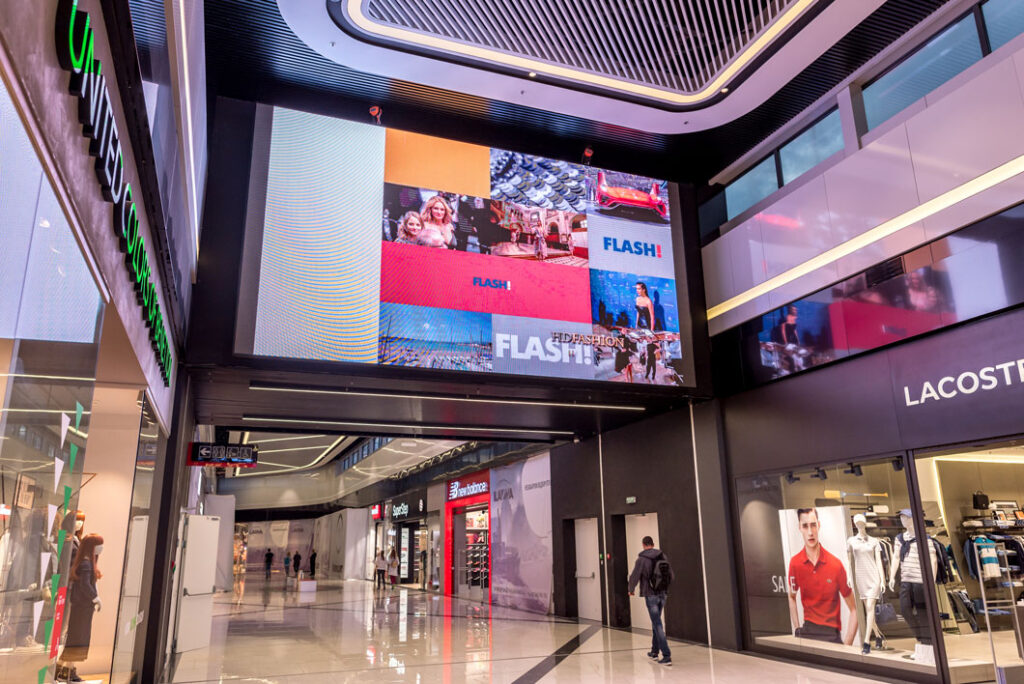
- Conference rooms – for demonstration of presentations and video conferences
- Assembly halls – for decorating the hall and for broadcasting a stage performance on the screen
- Shopping malls – video walls are ideal for displaying advertisements
- Meeting rooms – to display incoming video signals of participants in a remote video conference
- Dispatching services and situational centers – as a large screen that accumulates all available information that comes from various channels
- Centers for the control of large industrial facilities – for displaying process parameters
- In a TV studio, a video wall is an ideal solution for live broadcasts and events.
- Museum installations – provide atmosphere and convey creative ideas
- In the field of education – for lectures, presentations, scientific conferences
- Interactive systems – can be used in educational institutions and much more
Video processor, aka video wall display controller
A video processor or video controller is a software and hardware system that allows using specialized software to quickly and efficiently combine several video signal sources connected to the video processor into a single working virtual space (reminiscent of the extended desktop mode on a regular PC) and display the already combined image or video on the general screen. A piece of the received image is then broadcast by the matrix switcher to each of the screens of the video wall directly.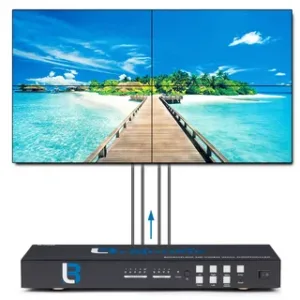
What should I look for when choosing a video processor? The configuration and functionality of the processor are selected based on customer requirements. In some cases, one set of functions will be needed, in others, another. Some processors allow you to create multi-window modes by combining the image from several signal sources connected to the controller into a single image (the principle of the quadrotor). Other, multi-tasking devices allow real-time processing, scaling, and even moving the image of a particular connected video signal by pressing a button on a computer, in specialized controller software, while not losing the resolution of the final image. And some video processors have all the functions at the same time.
Seamless Video Wall Display
A variety of video walls, in which the joints between individual screens are practically invisible or completely absent, are called seamless video walls. On video walls with narrow seams, any image looks truly unified, not lined into separate cells by seams and frames between displays. Therefore, seamless video walls are used where even the slightest compromise in terms of content display quality is unacceptable.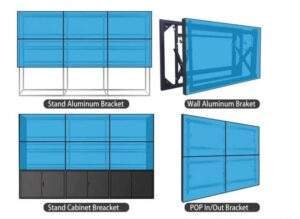
One of the most important parameters of a video wall is the thickness of the seam between the panels, which determines the quality of the picture and the minimum borders between displays. The smaller the seam of the panel, the more complex the technological process of its production and the higher the cost. The minimum gap width is currently less than 1 mm. Such displays form the most complete image.
The second important parameter is the brightness of the panels, measured in candela. High brightness allows you to display a bright and rich image in bright areas of the room.
LCD Video Wall Display
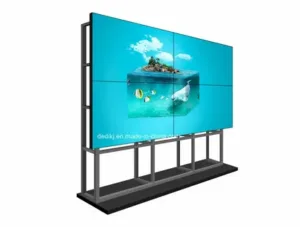 The LCD video wall is the most popular type of video wall made up of LCD panels. Each panel displays its own piece of a single image. At the same time, the joints between the displays are minimal, and the signal is adapted to eliminate the appearance of visual artifacts or the effect of image delay. There are many different scenarios for using LCD video walls: they are widely used in advertising, digital signage, show business, and other fields.
The LCD video wall is the most popular type of video wall made up of LCD panels. Each panel displays its own piece of a single image. At the same time, the joints between the displays are minimal, and the signal is adapted to eliminate the appearance of visual artifacts or the effect of image delay. There are many different scenarios for using LCD video walls: they are widely used in advertising, digital signage, show business, and other fields.
Video wall Display panels
LED Video Wall Display
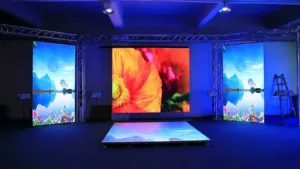 LED video walls form an image using colored LED elements. The resolution of such video walls is noticeably lower compared to projection, plasma, or LCD video walls. The reason for this shortcoming is the distance between pixels, i.e. more neighboring LEDs in the LED video wall. However, LED screens demonstrate excellent reliability, durability, and unpretentiousness in almost any operating condition, so they are suitable for outdoor use. And their main advantage is the high brightness of the image, which determines its use in outdoor advertising.
LED video walls form an image using colored LED elements. The resolution of such video walls is noticeably lower compared to projection, plasma, or LCD video walls. The reason for this shortcoming is the distance between pixels, i.e. more neighboring LEDs in the LED video wall. However, LED screens demonstrate excellent reliability, durability, and unpretentiousness in almost any operating condition, so they are suitable for outdoor use. And their main advantage is the high brightness of the image, which determines its use in outdoor advertising.
Video wall Display formats
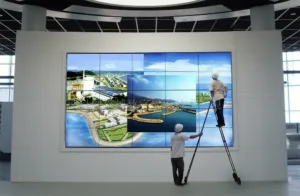 The number of individual video wall panels and their configuration are determined by the specific tasks and conditions of the video wall. For example, the 3×3 video wall format is often used in advertising, digital signage, or situation centers. And the 3×1 format can be used when decorating a stage or a concert hall. From a variety of panels, you can easily create both standard formats and arbitrary ones.
The number of individual video wall panels and their configuration are determined by the specific tasks and conditions of the video wall. For example, the 3×3 video wall format is often used in advertising, digital signage, or situation centers. And the 3×1 format can be used when decorating a stage or a concert hall. From a variety of panels, you can easily create both standard formats and arbitrary ones.
The general rule for choosing a video wall format is as follows: the size of the image on it should be sufficient for comfortable reading by the viewer from the intended viewing distance.
Video wall Display mounts
Metal frame structures are designed for stationary and mobile mounting of video walls. Specialized brackets allow you to precisely adjust the relative position of the LCD panels to minimize butt joints and maintain the overall tilt angle to avoid image distortion in certain sections of the video wall. The ability to calibrate a video wall is determined by cost, video wall model, and manufacturer. The more expensive the mount, the more possibilities it has. As a typical example, push-and-pull mounting models allow, with slight pressure on the panel’s screen, to fold it back to access the back of the board.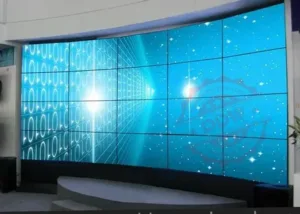
The following types of fasteners are commonly used:
- wall
- Wall-ceiling
- Ceiling
- floor standing
- Mobile stands
Installation of Video Wall Display
Installation of a video wall can be divided into several main stages:
- The location of the video wall is determined based on the requirements for the project. It is worth considering sanitary standards, the height, and length of the room, as well as the minimum distance to the people watching, guaranteeing a convenient view
- A metal structure is designed and mounted – these are load-bearing supports and fasteners. Mounts for video walls can be both in the form of floor and wall metal structures. They can be of any size, it all depends on the size of the required video wall.
- In the second stage, the load capacity of the equipment is calculated and the foundations are prepared, which are required to strengthen the wall in the place where the system will be located. They must support the weight of the purchased video wall.
- The next step involves testing each panel for performance, this is done so that later you do not have to disassemble the already installed wall.
- The next thing to do is to lay the lines of switching routes, network, and HDMI cables and connect video signal sources to the screen.
- And the last thing: testing, tuning, and the launch of the entire system are being carried out again. Verifies that all system components are working properly.
You can buy a video wall when ordering any services for multimedia room equipment at Video wall Display.
